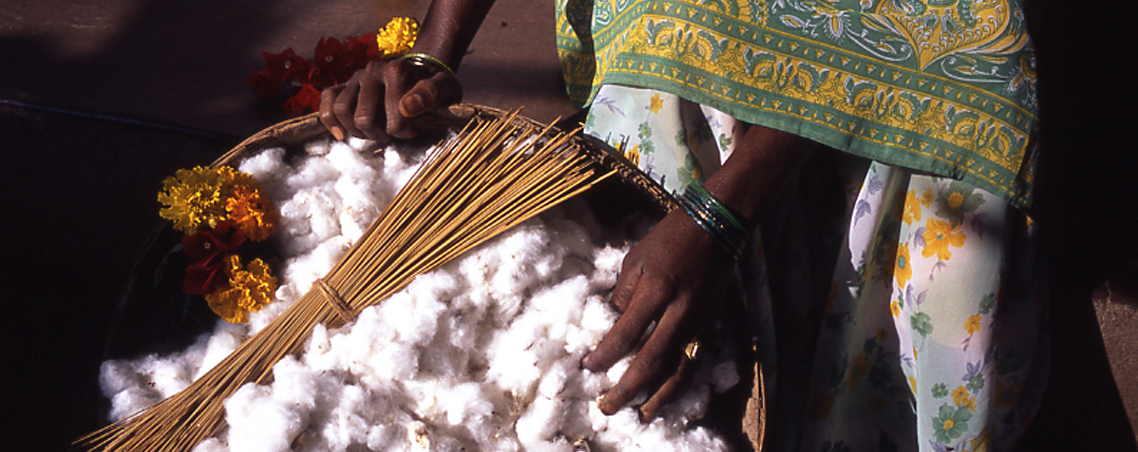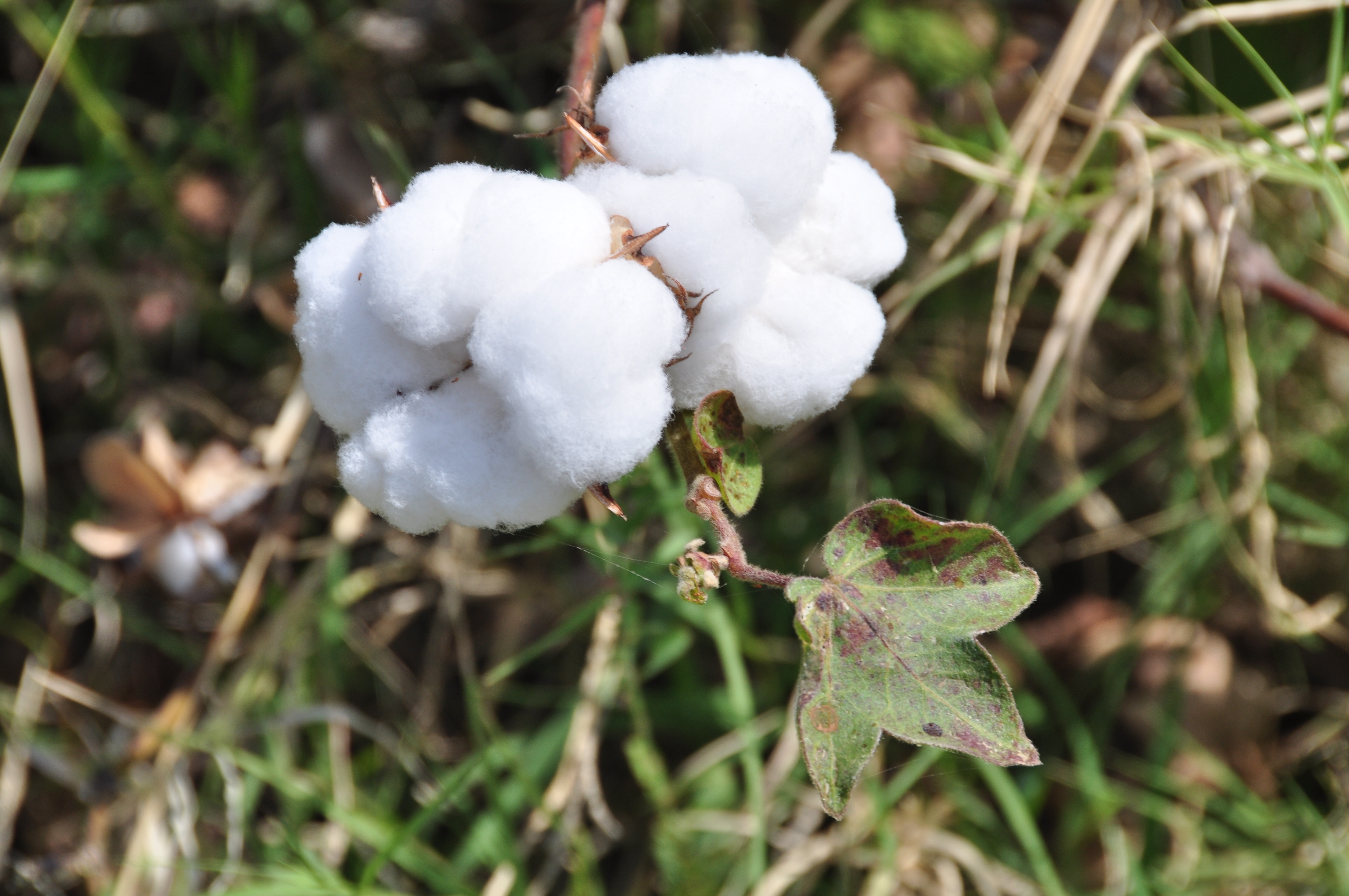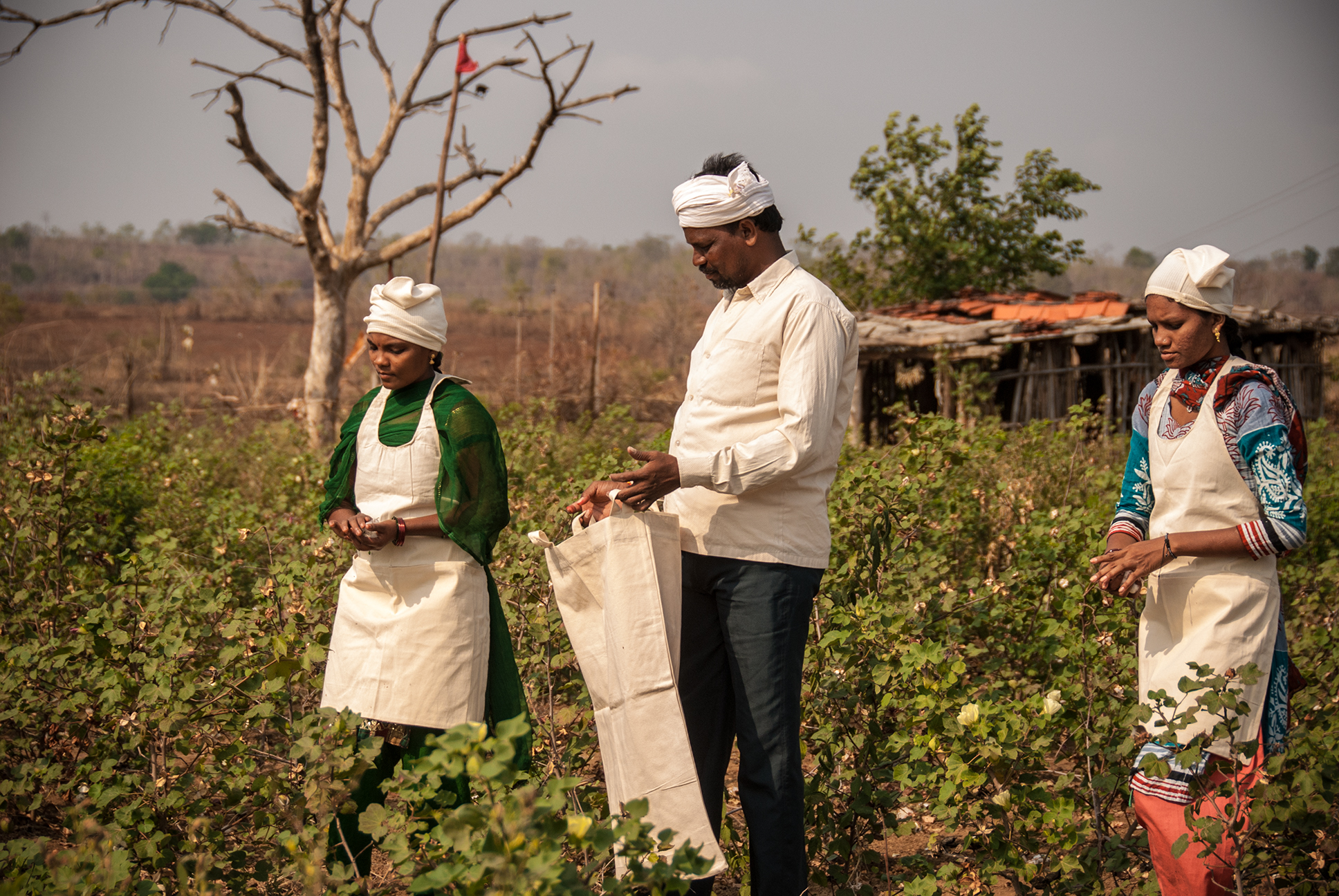Why Organic Cotton?
Recent years have shown double digit growth for the organic industry. According to OTA, organic sales in the US were a record breaking $43.3 billion in 2015, up 11 percent from 2014. Non-food products have grown to 13 percent of the total organic market, with organic fiber sales leading the charge at $1.3 billion in 2015, up almost 17 percent from 2014. Major clothing retail chains and brands have started incorporating organic cotton in their apparel lines. Organic consumers are paying between 20-80% price premiums in their quest for a healthier and environmentally responsible lifestyle. Demand is continuing to grow as consumers seek responsible choices and become aware of the troubling issues with the conventional cotton industry.
Cotton production has major impact.
As the most popular fiber in the world, cotton represents around 35 percent of the total textile market. China, India and USA grow almost two-thirds of the world’s cotton. Cotton is also a food crop; cottonseed oil is used in many processed and snack foods and cottonseed is used in cattle feed.
Conventional just isn’t right.
- GMOs have taken over the conventional cotton industry. Monsanto’s genetically modified cotton now accounts for a staggering 90- 95 per cent of cotton seed worldwide. Sterile GMO seeds break the natural cycle of regeneration and threaten bio-diversity, wildlife, and soil micro-organisms; all of which have devastating environmental implications. GMO farming shifts control and management from farmers to mega-corporations, since it is dependent on patented seeds and chemical applications. The controversial Bt cotton, which incorporates a toxin to kill bollworm, now accounts for 93% of cotton grown in India. While it has brought short-term gains and lowered pesticide use against bollworm, non-target pest populations like aphids have exploded and overall pesticide use has risen. There is also increasing evidence that the Bt-toxin is harmful to humans and mammals when the crop is consumed.
- Cotton has some of the highest pesticide and chemical use. Most pesticides were originally developed as toxic nerve agents during WWII and have been linked to cancers, neurological and developmental disorders. According to PANNA, nearly $2.6 billion worth of pesticides are sprayed on cotton fields each year —accounting for more than 10% of total pesticide use and nearly 25% of insecticide use worldwide. In fact the EPA considers 5 of the top 9 pesticides used on cotton as “likely” or “known” human carcinogens. Ironically, it is estimated that less than 10% of the chemicals applied to cotton accomplish their task, the rest are absorbed into the plant, air, soil, water and eventually end up in our bodies. When sprayed from the air, these highly toxic chemicals can poison farm workers and drift into surrounding neighborhoods. Pesticide applications contribute to major ecological damage and pollute ground and surface water, presenting an increasing danger to all wildlife, and esp. birds and bee populations. Bird deaths from pesticide poisonings are estimated at an astounding 67 million per year today. Spraying and even coating seed with neonicotinoids has become a common practice, making the pollen and nectar deadly to birds and bees that depend on it. Conventional cotton is also a major user of toxic herbicides, fungicides and defoliants. During processing, cotton is further subjected to chlorine bleach, heavy metal dyes and formaldehyde resins, the hidden hazard of ‘wrinkle free’ and ‘stain resistant’ treatments.
- Conventional cotton is not fair to farmers According to a WHO estimate, up to 40,000 deaths and 3 million cases of health problems are directly caused by agricultural pesticide poisoning each year. Moreover, conventional farmers become dependent on profit driven corporations for expensive seed and pesticide purchase. As insects and weeds gradually become resistant, ever-increasing amounts are applied to be effective, leaving farmers helplessly caught on the pesticide treadmill. Approx. 200,000 farmers in India commit suicide each year when faced with devastated fields, contaminated water wells and mounting debt. Rural workers forced to abandon their livelihood often end up in slum city dwellings in deplorable conditions.
The organic alternative is better.
Our cotton is grown, processed, dyed and made into clothing according to organic standards. This simply means that the entire production chain follows strict organic processes to provide a completely environmental product.
- Organic cotton is grown with natural means and uses sustainable practices. These include manual farming, using high quality resilient seed varieties, crop rotation, water conserving methods and botanical pest control. The soil is enriched and healthy so it requires fewer external applications and treatments. Many of our farmers follow bio-dynamic practices, strengthening an age-old Indian belief in a spiritual connection with soil.
- The eco-friendly processing uses recycled water, bio fuels, reduces electric use and conserves and recycles resources. Our dye unit has an on-site effluent treatment plant to prevents toxic runoff. We use non-chlorine bleach, silicone-free softeners and low impact, azo-free dyes that do not create a hazard to health and environment. Scraps off the cutting table are recycled.
- Strict testing is conducted to ensure the absence of hazardous elements like nickel, lead, formaldehyde, amines, pesticides and heavy metals.
Who benefits when you buy organic cotton?
- Farmers and rural communities: Being safer, ecological and fair, organic farming directly benefits farmers and their families and allows them a life of dignity. Farmers in organic projects are often land owners and organic premiums are invested in bettering local communities.
- Factory and mill workers: Organic standards ensure that safe ingredients are used which do not compromise workers’ health. They are spared contact with hazardous chemicals often used in garment finishing factories.
- Our planet: Organic farming practices are regenerative. Crop rotation and manual cultivation maintain healthy soil, use less fossil fuels and sequester carbon dioxide, helping combat global warming. Better water management conserves this increasingly scarce resource.
- Wildlife: Birds and animals are spared poisonous pesticides and toxic chemicals in soil, air and water. Conventional farming can create a hostile environment for wildlife and devastate entire eco systems.
- Consumers: Organic cotton just feels better for the body, mind and soul! People with chemical sensitivity especially seek out natural, untreated organic cotton.
- Citizens of this Earth: It’s a small world after all! We are all affected by the production and application of pesticides and poisons. We all share the burden and cost of toxic residues in the environment, clean up and impacted health. We may be closer than we think to the cotton farms, chemical factories and waste treatment facilities that handle toxic chemicals used on our clothing. By choosing organic products, we are using our consumer power well and adding our voice to the environmental movement.
HAEnow.com



